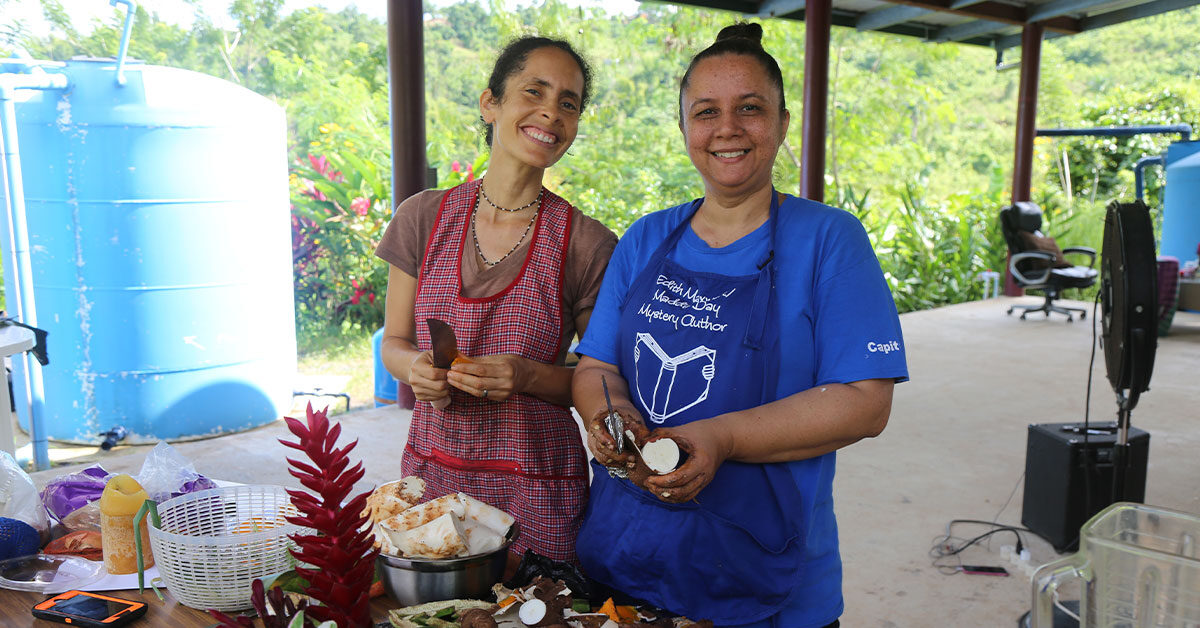

Have you ever wanted to bring people together to help them transform their health using a whole food, plant-based (WFPB) diet, but you’re not sure where to start?
Dr. Ted Barnett (aka “Dr. Veggie”) is dedicated to transforming the practice of medicine with plant-based nutrition. In his video presentation—as part of the Plant Forward Workshop Series hosted by CNS in 2021—he introduced workshop attendees to the 15-day WFPB jumpstart program that he and his team run at the Rochester Lifestyle Medicine Institute.
What is a jumpstart?
Jumpstarts are short-term dietary interventions. They offer participants the opportunity to see quick health results by making intensive changes, and they typically last between five days to one month.
Many people advocate for making gradual lifestyle changes, and that might work well for some people. But as Dr. Barnett argues, if people don’t make big changes to their behavior, they might become frustrated by the lack of big changes in their health. Even if they do see steady improvements, this lack of dramatic change might undermine their motivation. As Dr. Barnett points out, jumpstarts only ask people to commit to making changes for a very short period of time, and participants are able to see impressive results that can then spark lasting change.
What does running a jumpstart look like?
Initially, Dr. Barnett’s jumpstarts were hosted in his office with 24–30 people. Participants received shopping lists a few days before the jumpstart began so they could prepare with the right food. They then attended three Saturday sessions and one on a Sunday. They would be served breakfast and lunch, receive a lecture on a nutrition topic, and have small group discussions and Q&A sessions.
With the onset of Covid, the jumpstarts moved online. There are now a total of seven meetings: two-hour meetings on the first Saturday and Sunday, plus midweek check-ins. The graduation at the end of the jumpstart is a chance for everyone to get together and to receive their lab results.
In some ways, going online has enhanced the jumpstart experience: participants can now connect with others from around the world. In each jumpstart group, participants are encouraged to share photos of their food, along with the recipe. These are then put into a booklet that can be shared with the group.
Biometric data is collected from participants both at the start and at the end of the jumpstart, including their weight, blood pressure, and cholesterol.
You don’t need to be a physician to run a jumpstart, but participants may have questions that need the response of a medical professional, and you will, of course, need someone suitably qualified to carry out certain tests if you wish to include these. And if you want to be able to share your results and convince others in the medical world that your dietary intervention is worth promoting or further researching, thorough documentation of all the data is a must. As Dr. Barnett says, “if it’s not documented, it didn’t happen.”
Strategies for starting and maintaining a successful jumpstart program
It’s important to make your jumpstart fun. In Dr. Barnett’s words, “Nobody wants to come to a party where everybody seems miserable.” It’s also important that participants feel they are joining a supportive community.
Dr. Barnett suggests starting with people who have conditions that will respond well to the intervention. For instance, people with high blood pressure, joint pain, or heartburn will be able to see their numbers drop fairly quickly and hopefully experience an improvement in their symptoms.
Watch this short video clip to learn about the importance of self-determination in finding motivation for behavioral change:
To help those who are unable to afford the cost of a jumpstart program, you can apply for grants. With the support of a community grant from CNS, Dr. Barnett’s group was able to offer a number of scholarships to those in the Rochester, NY area.
What results can participants achieve from a jumpstart?
Dr. Barnett’s team have been running these jumpstarts since 2018, and they have seen some amazing results in that time.
Participants on average lose 6 pounds and achieve a 26-point drop in cholesterol. For those whose pre-jumpstart cholesterol exceeded 200, the drop was even greater—44 points in just two weeks!
The health improvements are often very rapid. If someone is being treated for a chronic illness, it’s critical that they let their physician know that they should be monitoring their prescription. Participants often have to reduce or eliminate the drugs they are using as a result of the improvements.
The team have published their data in the American Journal of Lifestyle Medicine: “Jumpstarting Health With a 15-Day Whole-Food Plant-Based Program.”
You can learn more about jumpstart programs and watch the full video from Dr. Ted Barnett by joining Whole Communities. This is a free online community where you can connect with others, get support, and join inspirational workshops every month. We’re coming together to build resilient communities of health through WFPB nutrition, and you can join us here.
Copyright 2025 Center for Nutrition Studies. All rights reserved.
Deepen Your Knowledge With Our
Plant-Based Nutrition
Certificate
Plant-Based Nutrition Certificate
- 23,000+ students
- 100% online, learn at your own pace
- No prerequisites
- Continuing education credits



